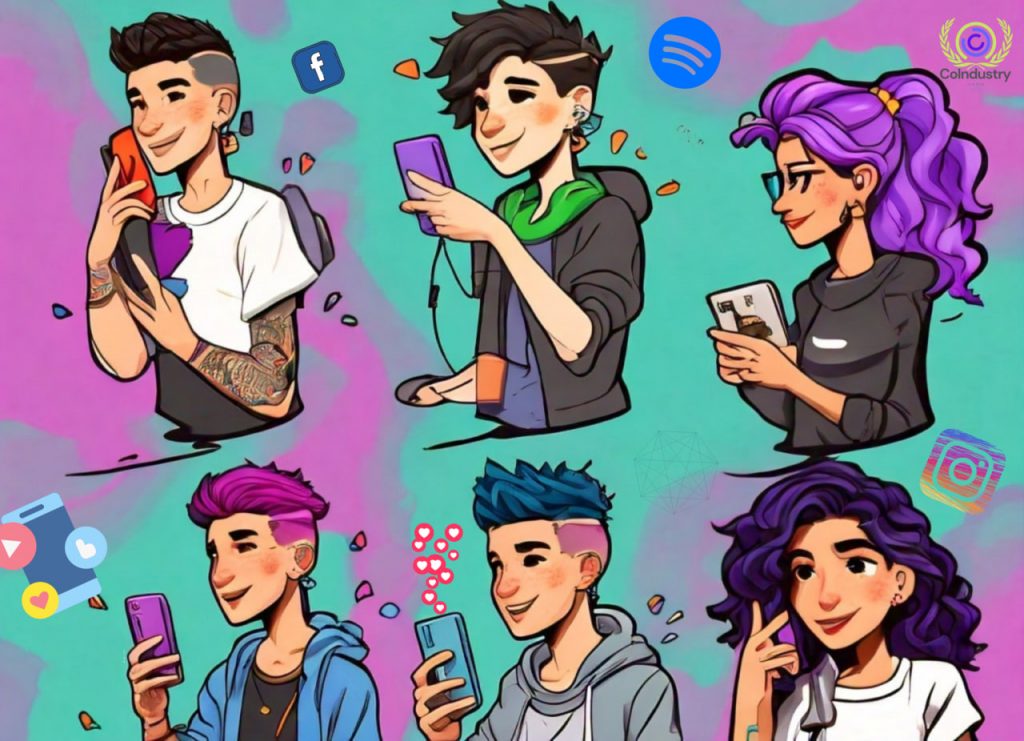The Evolution of Social Media: A Transformative Journey
Social media‘s evolution signifies a transformative shift in our interactions, communications, and participation worldwide. This journey, beginning in the late 20th century and continuing into the present, mirrors the technological advances and cultural shifts that have redefined digital communication. This essay explores the history of social media, its platforms, and its profound impact on society.

The Dawn of Social Media
Late 1990s: The Pioneers
The inception of social media can be traced back to the late 1990s with the launch of Six Degrees in 1997. Regarded as the first social media site, Six Degrees introduced the concept of profile creation and friend networking. However, despite its innovative approach, it was ahead of its time and ceased operations in 2001. Close on its heels, LiveJournal emerged in 1999, combining social networking with blogging. This platform provided a personal space for writing and connecting with friends, setting a precedent for future social media platforms.
The 2000s: Growth and Diversification
The early 2000s saw the emergence of Friendster and MySpace. Launched in 2002, Friendster aimed to connect online friends and integrated social gaming, gaining significant traction in Asia. MySpace, introduced in 2003, became synonymous with the era, offering customizable profiles, music sharing, and new forms of online expression.
Over the decade, major players like Facebook, YouTube, and Twitter entered the scene. Facebook, starting as a Harvard-exclusive site in 2004, quickly expanded to become the leading social network worldwide. YouTube transformed video sharing and viewing since 2005, becoming the go-to platform for video content. Twitter, launched in 2006, revolutionized news sharing and real-time communication with its microblogging format.
The 2010s: The Rise of Mobile and Visual Social Media
This era marked the rise of visually-driven and instant communication platforms. Instagram, launched in 2010, capitalized on visual content, swiftly gaining popularity, especially among younger audiences. Snapchat, introduced in 2011, popularized ephemeral messaging, appealing to privacy-conscious users. Meanwhile, WhatsApp (2009) and Telegram (2013) redefined messaging at no charge, encrypted global communication, challenging the dominance of traditional SMS.
The 2020s: TikTok and Niche Platforms
The current decade has seen the rise of TikTok, which, originating as Douyin in China, took the global stage rapidly in 2018 with its short-form video content. This era also witnesses the emergence of specialized platforms like LinkedIn for professional networking and Twitch for game live streaming, catering to niche audiences.
The Impact of Social Media
The transformative journey of social media reflects beyond technological innovation, reflecting a fundamental shift in a significant change in how communities form, share experiences, and create digital identities. It has democratized content creation, influenced political landscapes, and reshaped consumer-business interactions. As we move forward, social media continues to evolve, fostering new ways to global connection, sharing, and understanding.
Despite uncertainties about its future, the trajectory of social media points towards further innovation and deeper integration into daily life. This evolution beyond highlights the technological advancements that have enabled these changes while also underscores a significant cultural shift in communication, community building, and identity formation in the digital age. As social media continues to shape our perceptions and interactions, its role in global connectivity and engagement is undeniable.



